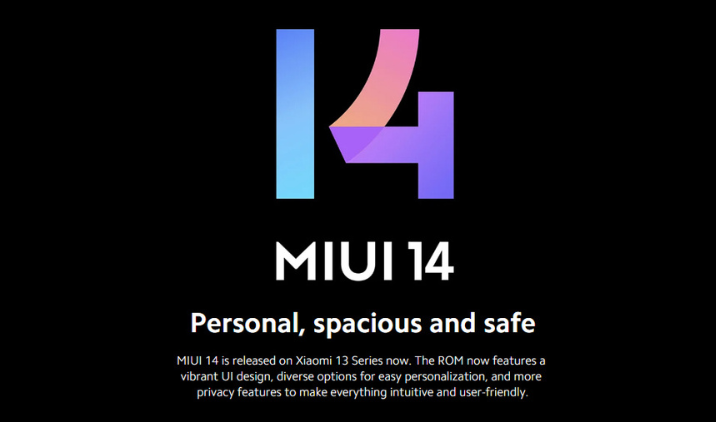XIAOMI 13 REVIEW – 30 DAYS OF INTENSIVE USE!
The Xiaomi 13, the latest flagship phone from the renowned Chinese manufacturer, was initially introduced to the market in China in December of the previous year. Now, it has been released worldwide, expanding its reach and making its mark on the global smartphone landscape.
As a user who has extensively tested the Xiaomi 13 for over 30 days, I am eager to share my in-depth experience and comprehensive insights in this Xiaomi 13 review.
Design and Display
The Xiaomi 13 showcases a visually stunning design that sets it apart from its predecessor, the Xiaomi 12 series. With its sleek rectangular shape and elegant finish, the phone exudes a premium feel. However, the use of glass on both the back and front surfaces contributes to its slipperiness, especially when handling the device with moist hands.
While the inclusion of a protective case is recommended, the vulnerability of OLED displays to damage makes purchasing insurance an additional precaution worth considering.
The phone’s AMOLED display is undoubtedly one of its most prominent features, and it delivers on all fronts. Offering improvements over its predecessor, the Xiaomi 13‘s display boasts a manual slider that provides around 510 nits of brightness. However, in auto mode, it truly shines, reaching an impressive 1250 nits of brightness. Consequently, the screen remains stunningly vivid and easily readable even in bright outdoor conditions.
Furthermore, the display exhibits excellent contrast, sharpness, and color accuracy. With the option to choose from different color modes, users can tailor the visual experience to their preferences. The support for major HDR video standards, including HDR 10 Plus and Dolby Vision, ensures that consuming HDR content is a delight.
- MORE CONTENT READ:
- iPHONE 14 PRO MAX VS GALAXY S23 ULTRA
- XIAOMI 13 PRO VS XIAOMI MI 11 ULTRA
- XIAOMI REDMI NOTE 12 4G REVIEW

Performance And Chipset
Under the hood, the Xiaomi 13 is armed with true flagship performance, thanks to its powerful Snapdragon 8 generation 2 chipset. The software optimization is commendable, resulting in seamless multitasking and swift navigation throughout the user interface. Gaming on the Xiaomi 13 is a treat, despite it not being marketed as a gaming phone. The performance is consistent and delivers a satisfying experience across various graphically intensive games.
However, a notable drawback is the inconsistency with the phone’s refresh rate. While it boasts a 120Hz refresh rate display, certain applications cause the refresh rate to drop to 60Hz, defeating the purpose of such a high refresh rate. This limitation leaves room for improvement in future software updates.
Camera Specs And Quality
The camera setup on the Xiaomi 13 is a focal point of the phone’s marketing efforts. Collaborating with Leica, Xiaomi aims to raise the bar in smartphone photography. The primary camera features an IMX 800 sensor paired with a professional 23mm f/1.8 Leica lens, which results in crystal-clear images with remarkable white balance and accurate skin tones.
The image stabilization, branded as Hyper OIS, is highly effective in reducing shakes and blurriness, ensuring that users can capture steady shots even in challenging conditions. Xiaomi has paid attention to color science, allowing users to choose between Leica Vibrant and Leica Authentic modes, each tailored to different artistic preferences.
While the primary camera impresses, the portrait mode experiences occasional struggles in capturing non-blurry faces of moving subjects. This limitation might be a concern for users intending to take a substantial number of portrait shots. Additionally, the ultra-wide camera performs well in daytime shots, but it does not stand out significantly from its competitors.
The telephoto camera, though comparable to the one in the Galaxy S23, lacks support for 4K video recording, which feels like a missed opportunity in a flagship device. The selfie shooter, while equipped with electronic image stabilization, falls short of delivering a true 2023 front-facing camera experience, with only 1080p resolution.
Overall, the Xiaomi 13’s camera hardware shows tremendous potential, but its performance can benefit significantly from future software updates, particularly in low-light photography.
Battery Life and Charging
The Xiaomi 13 sets a high standard in terms of charging speed, boasting 67-watt charging capabilities. With such fast charging, users can fully recharge their smartphone in less than 40 minutes, making it incredibly convenient for those on the go. Moreover, the improved battery life, attributed to the new Snapdragon 8 generation 2 chipset, ensures that users can enjoy extended hours of usage without frequent charging.
It is worth noting that by clearing most apps from memory, users can enhance battery life further, thanks to the optimizations in MIUI. While the battery life might diminish over time, it still competes favorably with smartphones like the Google Pixel 7 and is slightly behind the Galaxy S23.

Software and Features
The Xiaomi 13 runs on MIUI 14, which is based on Android 13. MIUI has long been known for its high level of customization, and the Xiaomi 13 continues that tradition. The theme’s engine offers ample opportunities to personalize the user interface to individual preferences.
However, the software experience is not without its faults, as some users have reported bugs. For instance, the new lock screen control bar for audio might be absent in certain cases, and issues with opening Quick Settings after exiting a game have been reported. Nonetheless, the operating system remains highly capable, and users can rely on the familiar suite of features found in MIUI-based devices, including the robust control center and additional customization options.
Connectivity and Features
The Xiaomi 13 impresses with its connectivity options, supporting both Wi-Fi 6 and 5G technology. As a result, wireless speeds are fantastic, and users can enjoy seamless online experiences. The integration with other Xiaomi ecosystem devices is also flawless, allowing for effortless pairing of new devices.
However, it is worth noting that the USB port at the bottom of the phone is limited to USB 2.0, which might be seen as an odd decision for a flagship device in 2023. While the wireless speeds are exceptional, transferring files via the USB cable could be comparatively slower compared to other modern flagships.
Pricing and Competition
The Xiaomi 13’s price might be a decisive factor for potential buyers, especially when compared to its competitors like the Google Pixel 7 and Galaxy S23. Some might find the high price justifiable given the phone’s solid performance, stunning display, and premium design. However, the sub-optimal camera portrait mode and minor software issues could deter certain users from making the purchase.

The Xiaomi 13 is undoubtedly a strong flagship phone that offers several notable improvements over its predecessor. With its visually stunning design, vibrant AMOLED display, and true flagship performance, it competes favorably in the global market. The collaboration with Leica elevates the camera capabilities, although there is room for improvement in certain aspects.
The Xiaomi 13 could be an attractive alternative to other flagship devices in its price range, but buyers must carefully consider the pros and cons based on their individual preferences and needs. With future software updates, Xiaomi has the potential to further enhance the smartphone’s capabilities and secure its place as a top contender in the highly competitive smartphone arena. Check out the latest price here.
- CHECK OUT MORE REVIEWS HERE:
- SAMSUNG GALAXY A54 REVIEW – THIS (A) SERIES IS GETTING BETTER
- SAMSUNG’S NEW INTERFACE ONE UI 5.0 REVIEW











1 COMMENTS